Abstract
Anaerobic storage of whole rumen contents at 0°C for 8 and 24 h resulted in viable colony counts which were 113 and 92%, respectively, of the colony count obtained with an unstored sample. No significant differences in the percentages of the total population capable of utilizing glucose, cellobiose, starch, or xylose occurred with storage. Numerous factors were investigated as possible explanations for the increase in bacterial numbers observed after storage for 8 h in ice. Growth and multiplication of bacteria, subsampling of rumen contents, susceptibility to oxygen, lysis of protozoa with the release of viable bacteria, and rumen sampling time did not appear to be involved. Compilation of the data from all 29 of the above experiments gave a mean value for samples stored for 8 h in ice which was 134.8% of the control (P < 0.005). The effect of storage time at 0°C indicated that a significant increase in colony count occurred after 4 h, and, based on these data, 6 h was subsequently used as the standard cold-storage period. Circumstantial evidence supported the hypothesis that storage of rumen contents for 6 h at 0°C appears to alter or to break down the material responsible for cell-to-cell or cell-to-particulate matter attachment. Addition of a surfactant to the anaerobic dilution solution significantly increased total colony count of rumen contents to an extent similar to chilling in ice for 6 h. However, an additive effect was observed when surfactant-containing anaerobic dilution solution was used with samples stored for 6 h at 0°C.
Full text
PDF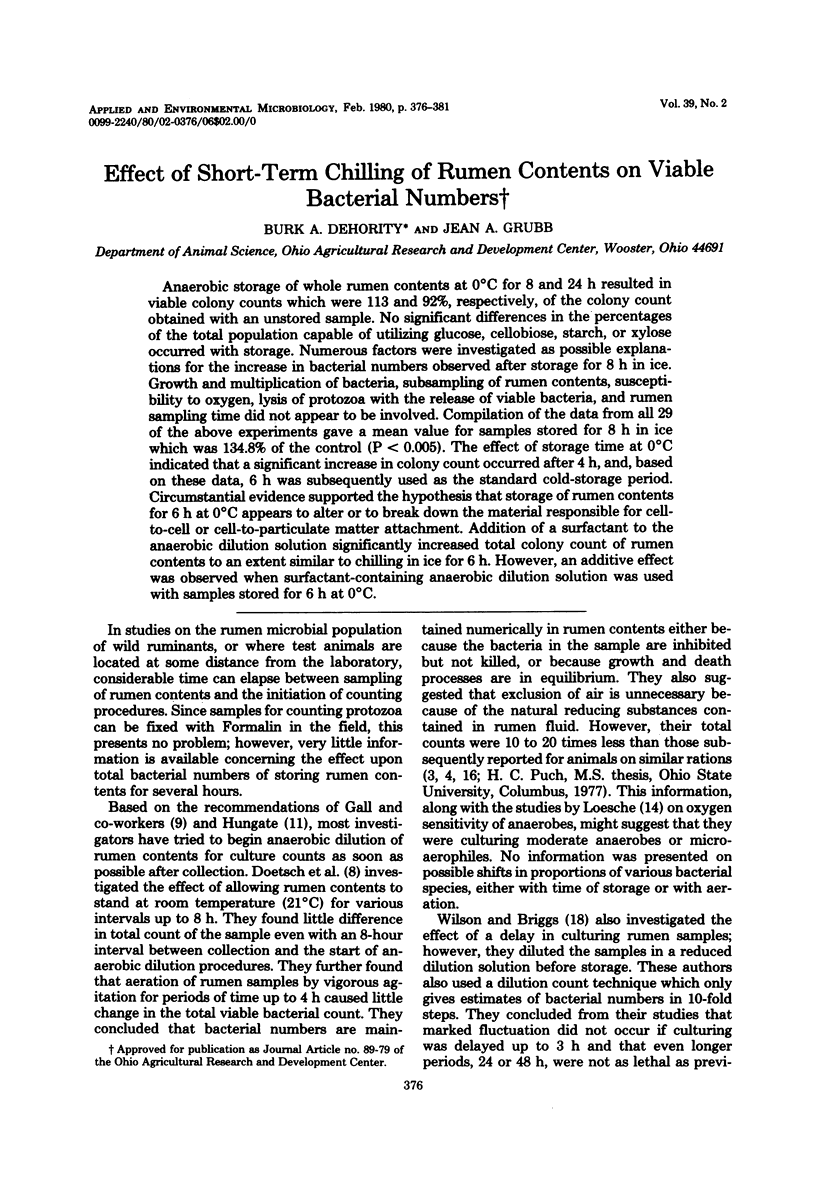
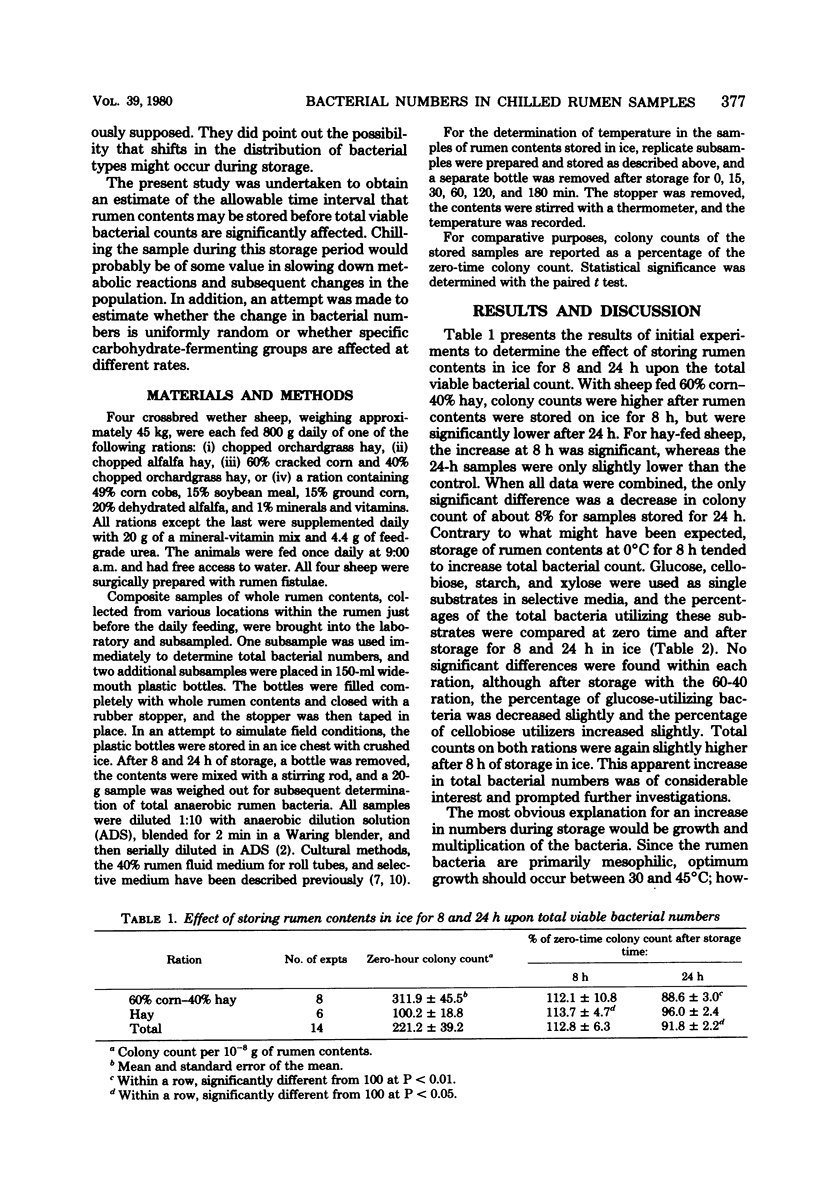
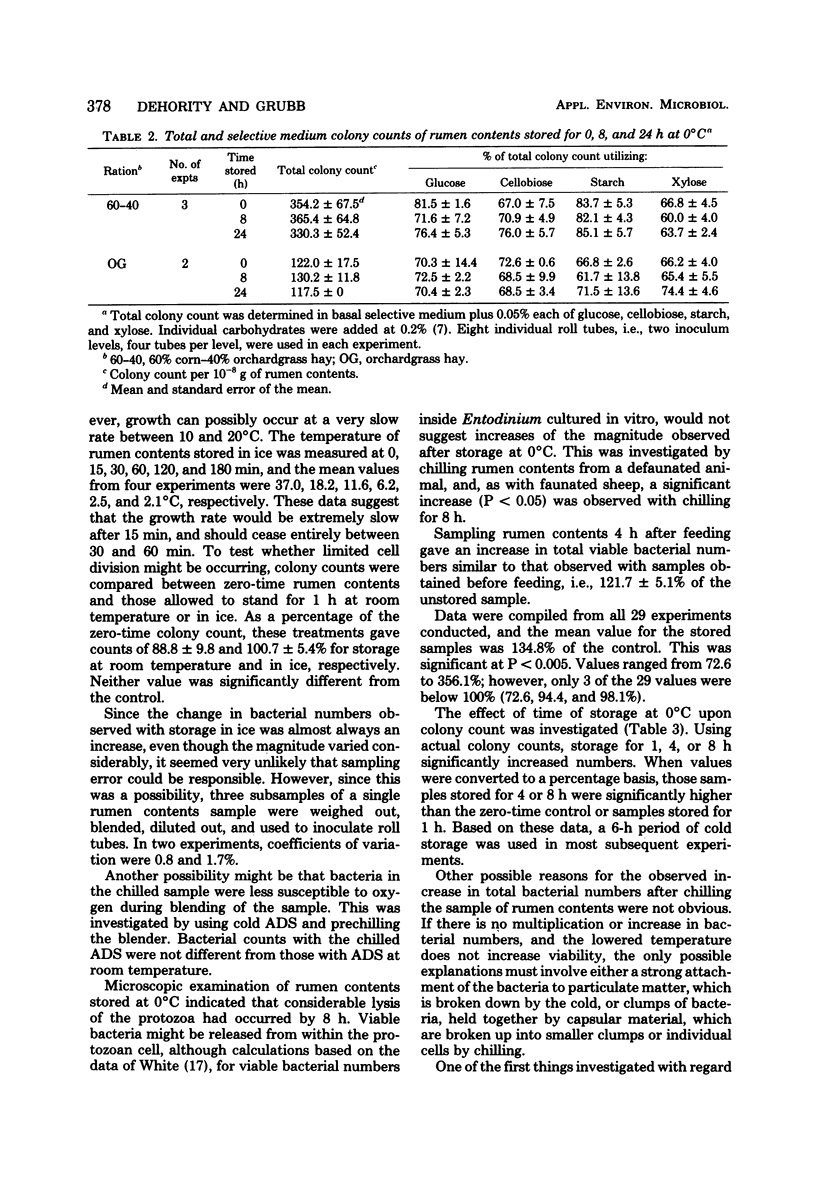
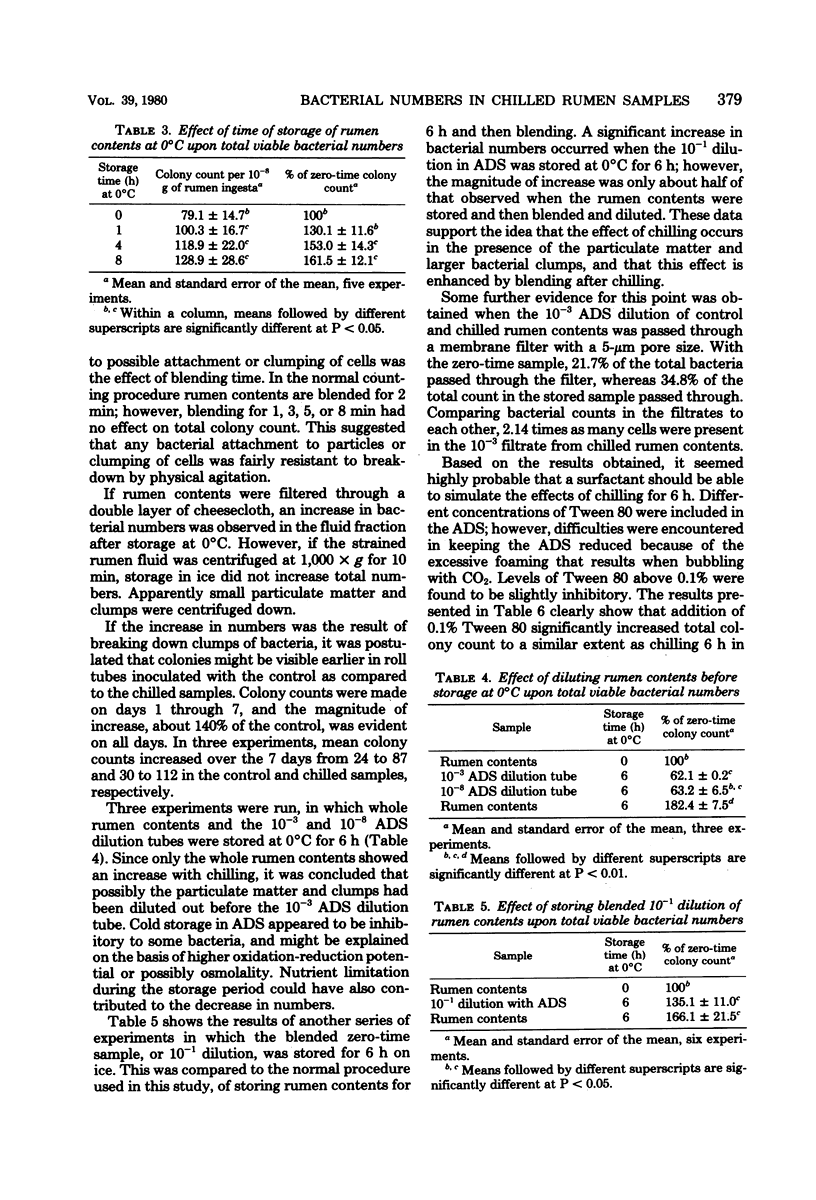
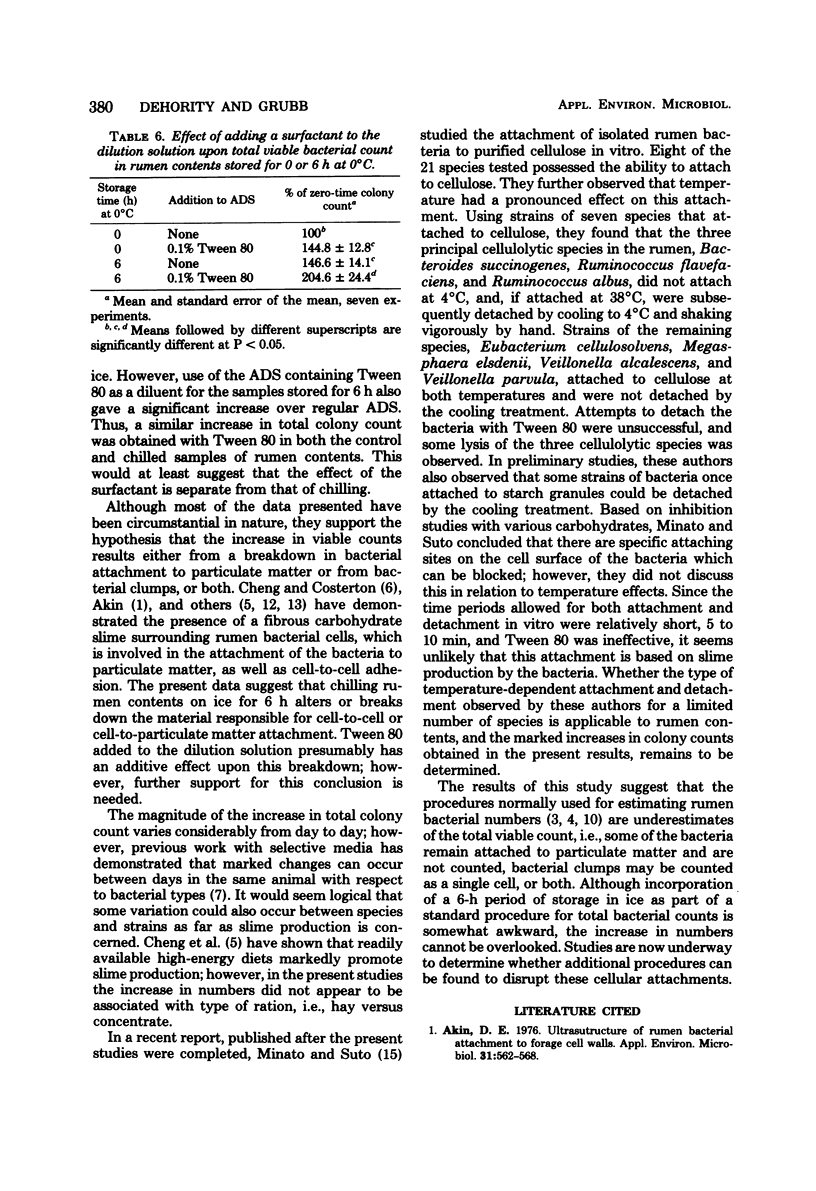
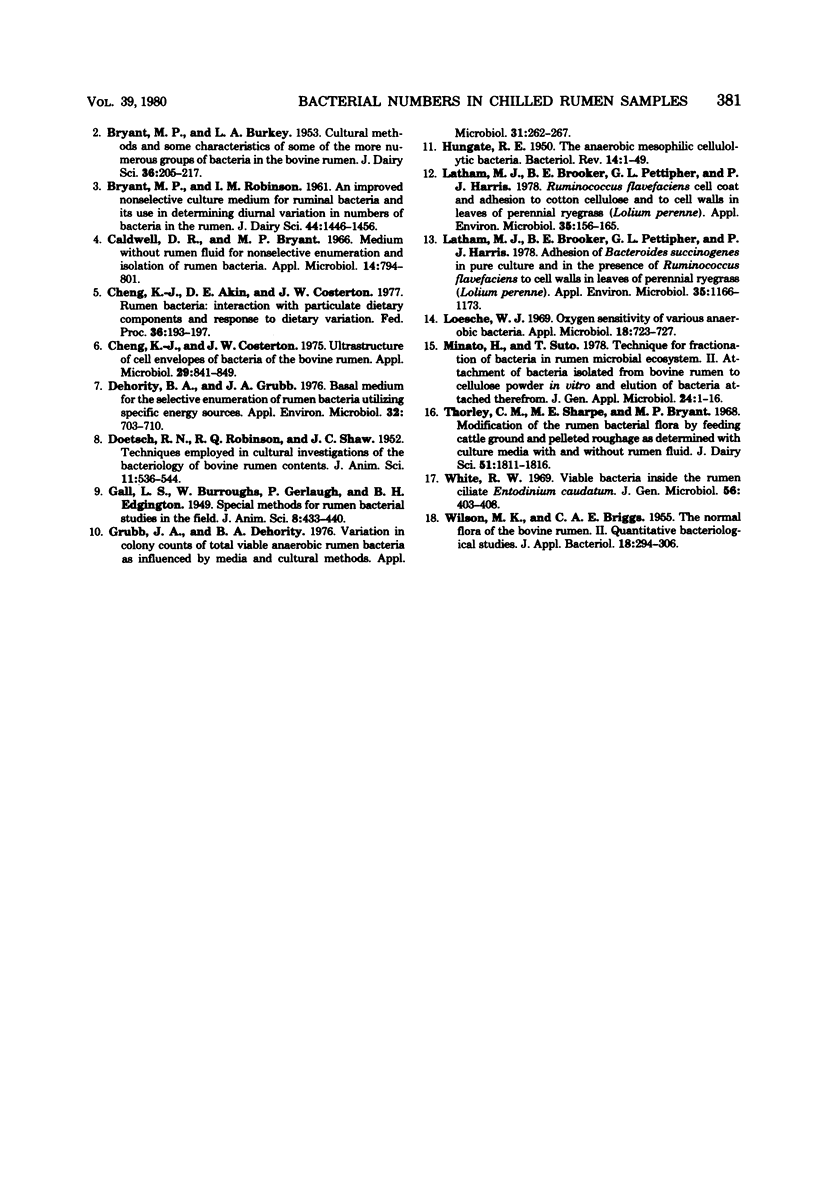
Selected References
These references are in PubMed. This may not be the complete list of references from this article.
- Akin D. E. Ultrastructure of rumen bacterial attachment to forage cell walls. Appl Environ Microbiol. 1976 Apr;31(4):562–568. doi: 10.1128/aem.31.4.562-568.1976. [DOI] [PMC free article] [PubMed] [Google Scholar]
- Caldwell D. R., Bryant M. P. Medium without rumen fluid for nonselective enumeration and isolation of rumen bacteria. Appl Microbiol. 1966 Sep;14(5):794–801. doi: 10.1128/am.14.5.794-801.1966. [DOI] [PMC free article] [PubMed] [Google Scholar]
- Cheng K. J., Akin D. E., Costerton J. W. Rumen bacteria: interaction with particulate dietary components and response to dietary variation. Fed Proc. 1977 Feb;36(2):193–197. [PubMed] [Google Scholar]
- Cheng K. J., Costerton J. W. Ultrastructure of cell envelopes of bacteria of the bovine rumen. Appl Microbiol. 1975 Jun;29(6):841–849. doi: 10.1128/am.29.6.841-849.1975. [DOI] [PMC free article] [PubMed] [Google Scholar]
- Dehority B. A., Grubb J. A. Basal medium for the selective enumeration of rumen bacteria utilizing specific energy sources. Appl Environ Microbiol. 1976 Nov;32(5):703–710. doi: 10.1128/aem.32.5.703-710.1976. [DOI] [PMC free article] [PubMed] [Google Scholar]
- Grubb J. A., Dehority B. A. Variation in colony counts of total viable anaerobic rumen bacteria as influenced by media and cultural methods. Appl Environ Microbiol. 1976 Feb;31(2):262–267. doi: 10.1128/aem.31.2.262-267.1976. [DOI] [PMC free article] [PubMed] [Google Scholar]
- Latham M. J., Brooker B. E., Pettipher G. L., Harris P. J. Adhesion of Bacteroides succinogenes in pure culture and in the presence of Ruminococcus flavefaciens to cell walls in leaves of perennial ryegrass (Lolium perenne). Appl Environ Microbiol. 1978 Jun;35(6):1166–1173. doi: 10.1128/aem.35.6.1166-1173.1978. [DOI] [PMC free article] [PubMed] [Google Scholar]
- Latham M. J., Brooker B. E., Pettipher G. L., Harris P. J. Ruminococcus flavefaciens Cell Coat and Adhesion to Cotton Cellulose and to Cell Walls in Leaves of Perennial Ryegrass (Lolium perenne). Appl Environ Microbiol. 1978 Jan;35(1):156–165. doi: 10.1128/aem.35.1.156-165.1978. [DOI] [PMC free article] [PubMed] [Google Scholar]
- Loesche W. J. Oxygen sensitivity of various anaerobic bacteria. Appl Microbiol. 1969 Nov;18(5):723–727. doi: 10.1128/am.18.5.723-727.1969. [DOI] [PMC free article] [PubMed] [Google Scholar]
- White R. W. Viable bacteria inside the rumen ciliate Entodinium caudatum. J Gen Microbiol. 1969 Jun;56(3):403–408. doi: 10.1099/00221287-56-3-403. [DOI] [PubMed] [Google Scholar]


